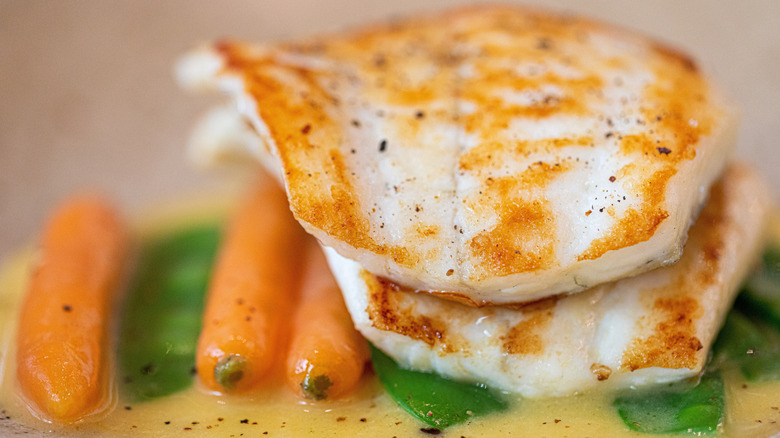Follow This Tip For The Best Pan-Seared Fish
If you're a fish lover, then you may be in the process of trying to perfect a pan-seared fish dish. The best pan-seared fish will be crispy on the outside, tender on the inside (and perfectly cooked), with plenty of flavor. The flavor is easy to take care of with the right seasoning, but how do you get the perfect sear? There's a key tip to keep in mind: Let the first side of the fish cook longer.
Before you add the fish to the pan, you'll heat up the oil first so that it's nice and hot when you add the fish — which is also essential for that crispy sear that we're looking for. Then, after adding the fish to the pan, be sure to not touch the fish — this is actually the major mistake most people make when cooking fish. Fish is delicate, so you risk it falling apart if you poke at it or try to check on it. Just let the fish sit and allow for the crust to develop on the first side.
Most fish don't take long to cook, but the exact cook times will depend on the type of fish — it may even be as short as one to two minutes per side. For mahi mahi, for example, this will mean leaving it on the pan for about four or five minutes; after flipping, the fish should be done cooking in about two minutes. To tell when the fish is ready to flip, look to the side of the fish and when it's cooked a little more than halfway up the filet, it's time.
More tips for the best pan-seared fish
As mentioned above, the oil needs to be hot before adding the fish, in order to achieve a crispy sear — but what kind of oil should you use? Well, the easy oil tip for perfectly cooked fish is to use a neutral oil with a high smoke point. If you choose one with a low smoke point, such as extra virgin olive oil, then you risk burning the fish while trying to sear the exterior. Plus, the neutral flavor won't take away from the flavor of the fish. To learn more, you can check out our ultimate guide to smoke points.
Additionally, the type of pan that you use can make a difference. While a non-stick skillet will work just fine, a stainless steel pan or a cast-iron skillet will allow for an even crispier outside sear. In this case, just use a little bit of extra oil so that the fish doesn't stick to the pan — there's no point in achieving a perfect sear if it's just going to stick.
Finally, be sure to pat the fish completely dry, using a paper towel, before seasoning it and cooking it. If you don't remove this excess moisture, then it's going to be harder to get that perfect sear — the fish needs to be dry to get crispy.

